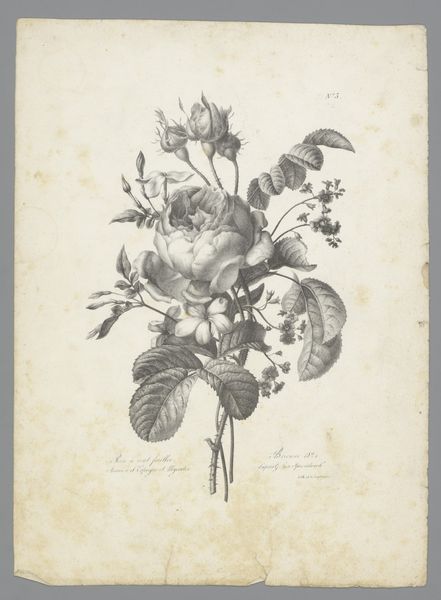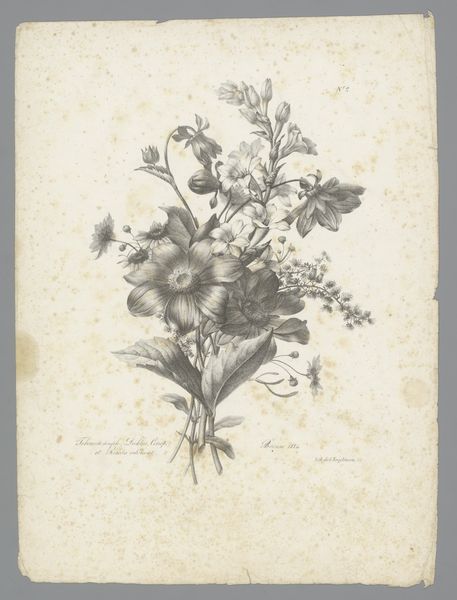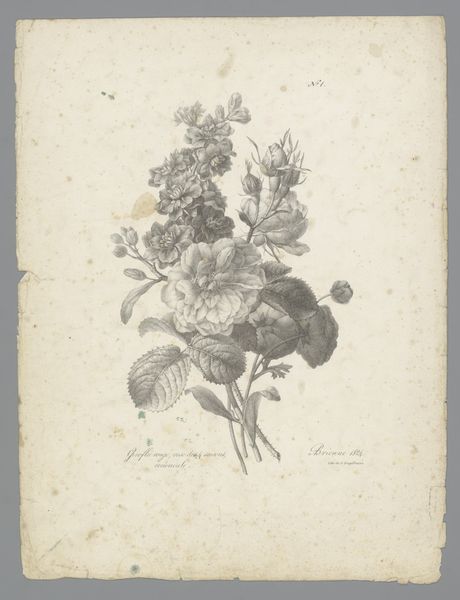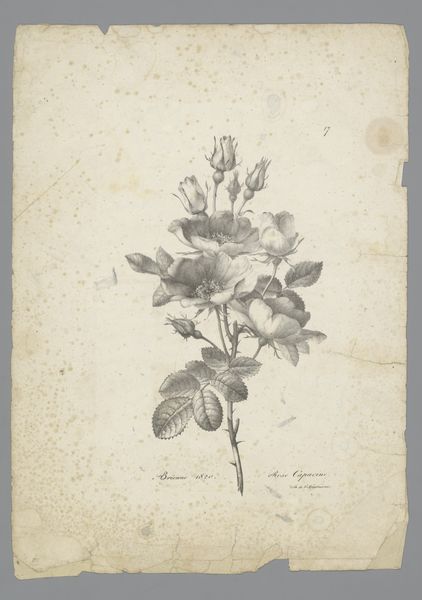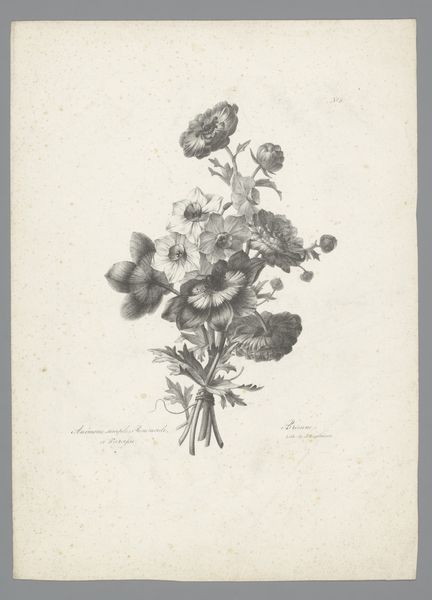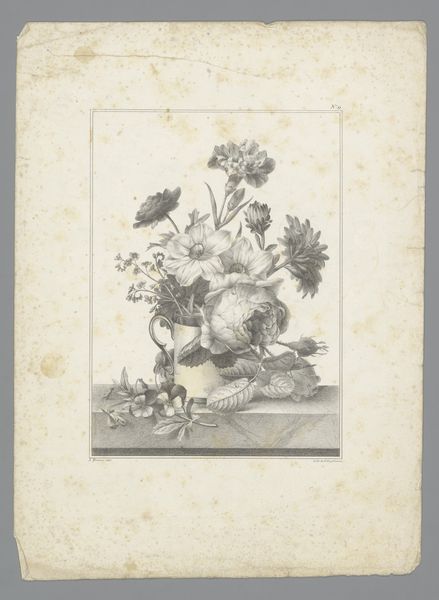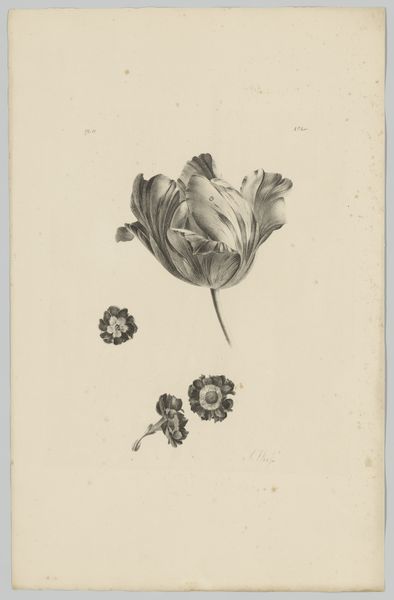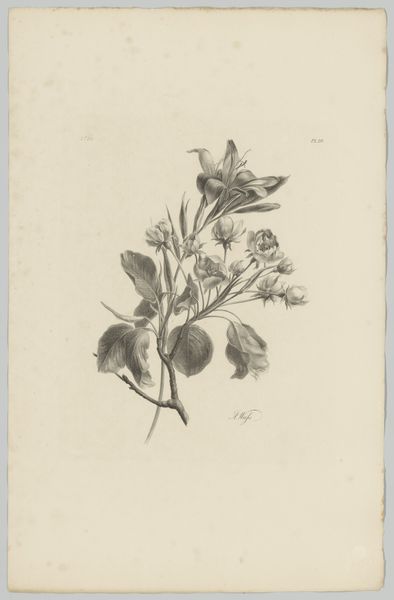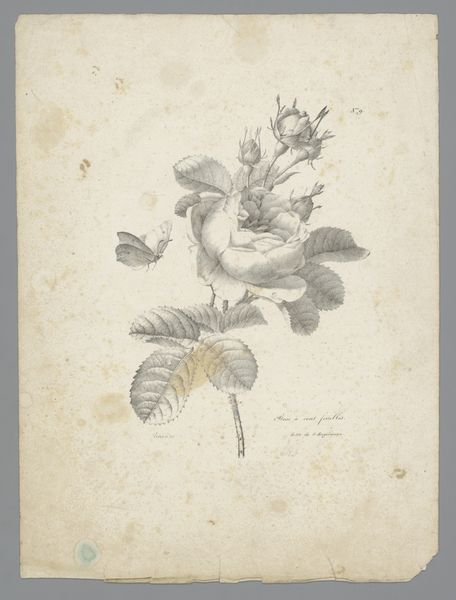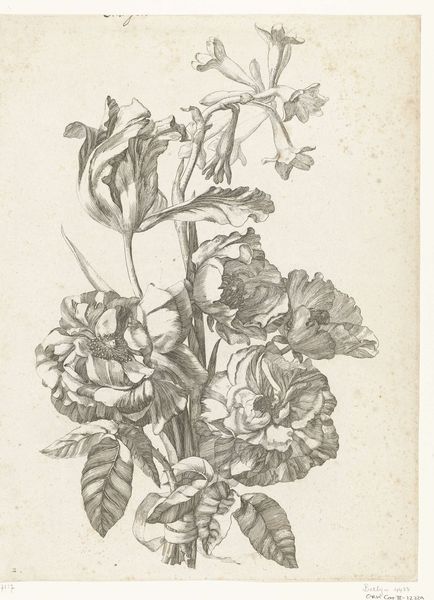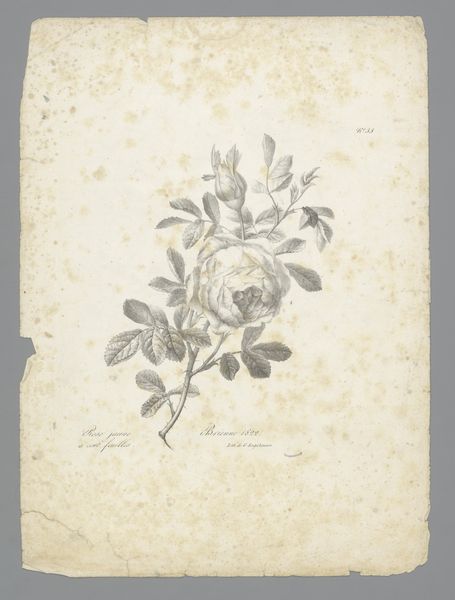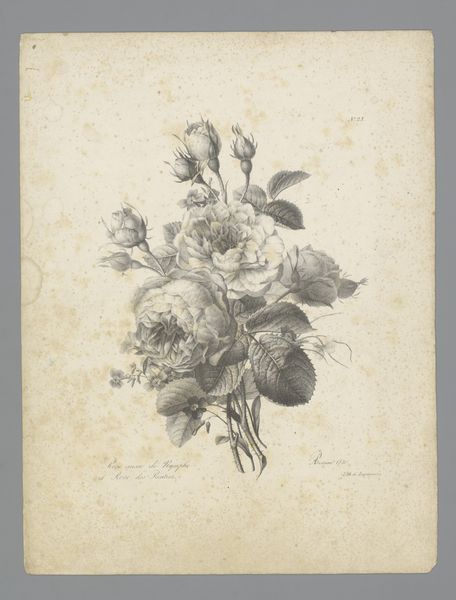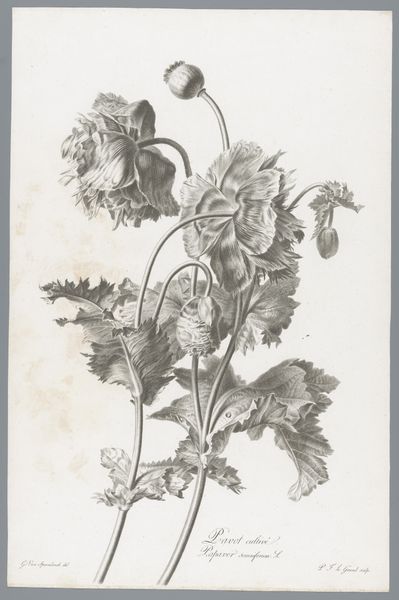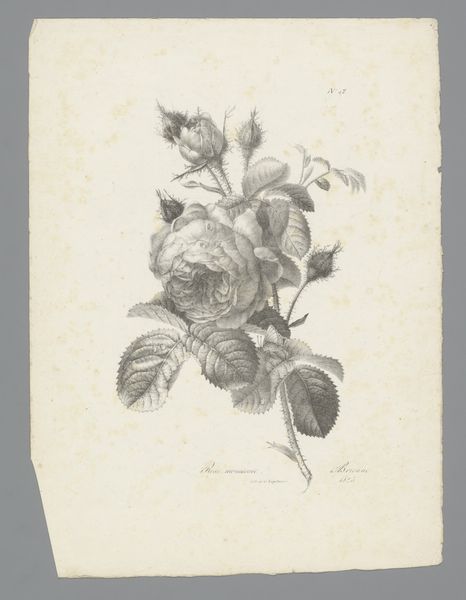
drawing, paper, pencil
#
drawing
#
paper
#
form
#
pencil
#
line
#
realism
Dimensions: height 365 mm, width 270 mm
Copyright: Rijks Museum: Open Domain
Curator: Looking at this lovely, if monochromatic, still life, I immediately appreciate its delicacy and softness. It’s not what I’d expect in botanical illustration of the period. Editor: Indeed, there’s a gentleness to this drawing. What we’re looking at is Auguste Piquet de Brienne's "Boeket met tulp, ezelsoor en blauwe cineraria" or "Bouquet with tulip, hare's ear and blue cineraria" created in 1824. The rendering, a graphite and pencil work on paper, is currently held in the Rijksmuseum. Curator: What's most striking is how the tulip, seemingly oversized, commands your attention, juxtaposed with the smaller, almost understated arrangement of hare's ear and blue cineraria flowers. The selection feels deeply symbolic. Is it? Editor: Undoubtedly. The tulip, even in a simple monochromatic study like this, always signified wealth and status in Dutch society and beyond during this period. The more unusual plants might represent a new dawn for botanists and flower collectors who could share their treasures at the burgeoning scientific gatherings or in their botanical publications, for example. Curator: It's an intimate look at a very public fascination with flora that took root and flourished in salons and universities. The botanical market created an economy, too. The rendering of individual petals, or each tiny tubular floret speaks to an attempt to bring understanding to an otherwise exotic entity. Editor: True. And even without color, there's a sense of vibrancy in the composition, the layering of the different plants lending it a depth that captures light in unexpected ways. The stark contrasts create this effect of motion. Curator: I agree. It seems like these flowers could spring off the page. Do you think Brienne was simply recording the plants or trying to explore this broader theme? Editor: Probably a bit of both. Artists didn’t tend to specialize like they do now; these types of compositions were sometimes just as fashionable for décor, especially for women, as an explicit representation of societal status or historical advancement. Curator: It's a beautiful, thoughtful reminder of how closely art is connected to society. Editor: Precisely. This understated yet elegant piece subtly captures the moment and gives meaning to ordinary blooms.
Comments
No comments
Be the first to comment and join the conversation on the ultimate creative platform.
